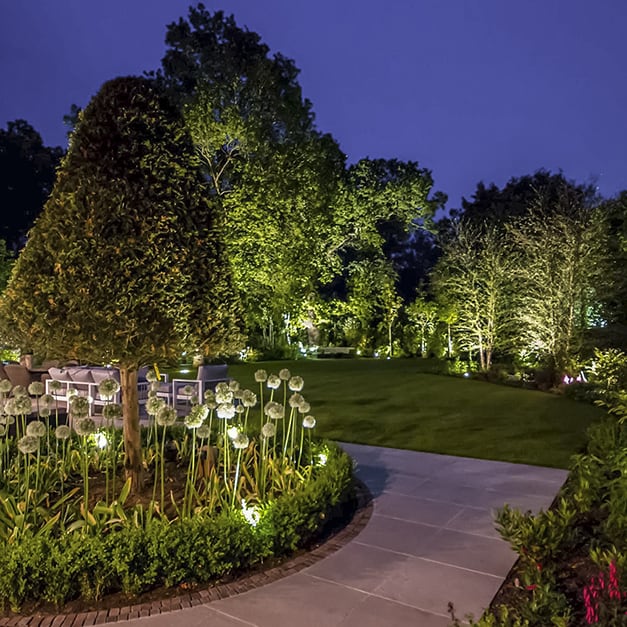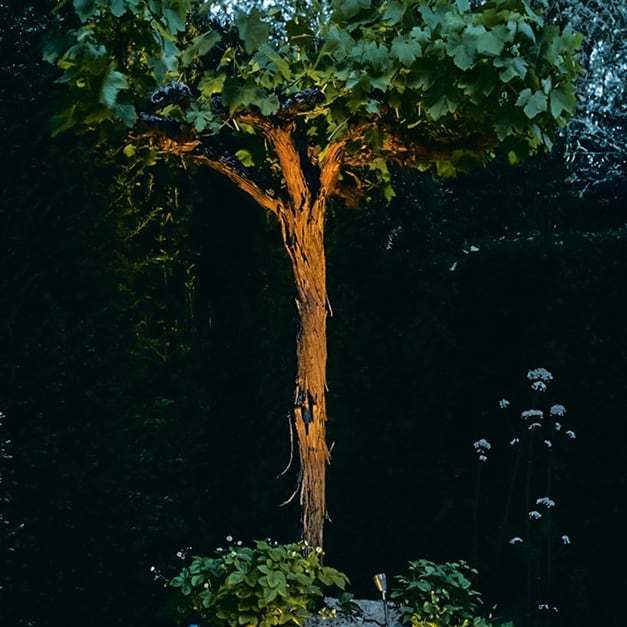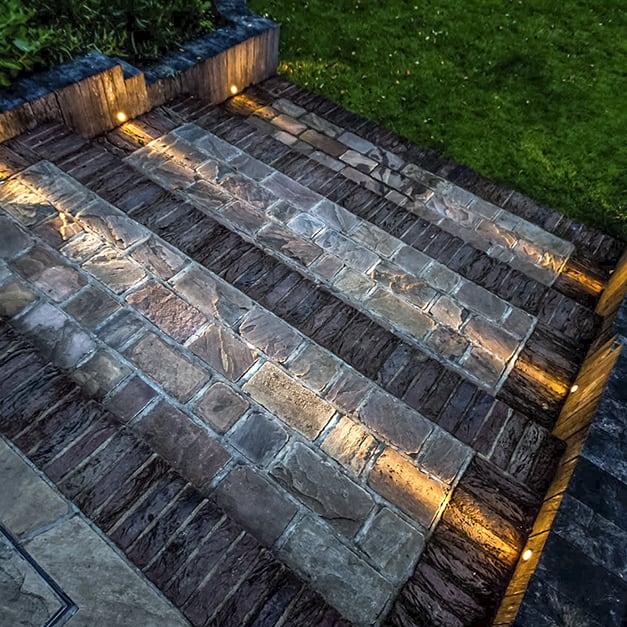We use cookies to make your experience better. To comply with the new e-Privacy directive, we need to ask for your consent to set the cookies. Learn more.


Landscape lighting: mains and low voltage
Factors to consider in choosing mains or low voltage for landscape lighting
01.
Existing wiring
If you are replacing an existing light fitting which isn’t LED, it is likely that you will be able to retrofit with a mains voltage light fitting. If you choose to do this then it is always wise to check the existing cables for any deterioration or damage, and to ensure that they are suitable for the new installation. If more load is added to the circuit, be aware that you may need to increase the size of the cables.




02.
Location
There are many types of light fittings which can be installed in various exterior locations and this can affect how they are powered. If mounting on a wall it may be easier to run a mains cable through the wall directly to a mains light fitting, as opposed to installing a low voltage fitting which would then need a secure spot to position the transformer.
Ground-mounted or recessed light fittings can be either mains voltage or low voltage, but if there is a risk that they could become submerged in water, or if these are to be installed in a water feature i.e. zone 0, then low voltage light fittings should be used. The low voltage transformers must be positioned outside Zones 0, 1 and 2.
03.
Size of the space
If lighting a small area such as a typical garden, then there is no real benefit to either option apart from the ease of installation.
However, if you are illuminating a very large area and the power supply is far away from the light fittings, then there is a possibility of voltage drop and the lit effect would be visibly affected by this. In this case, a low voltage solution will help to distribute the power supply evenly, so each light fitting will continue to give out the same amount of light at both the closest and furthest points from the power supply.




04.
Flexibility to locate cable and control
If opting for low voltage lighting then there must be due consideration for the safe connection and storage of the transformers and junction boxes. This is particularly important for public spaces where there is a risk of tripping or potential for vandalism.
This problem is avoided with mains lighting as the transformer is built inside the light fitting, but the mains cables supplying the fittings should be located away from risk of damage, and in some cases conduit or armoured cabling should be used. This helps to protect against accidental damage from a lawnmower or spade, and is also effective in protecting the cables from mice, rats or squirrels chewing through the cables.
Tips
Another aspect to consider is how the circuit is protected. In many buildings you will find that multiple circuits share one breaker, which could mean that if one of these circuits is used for the exterior lighting and the circuit fails, the other circuits are also affected. This risk can be mitigated by using an RCBO (Residual Current Breaker with Over-Current). Finally, don’t forget that mains voltage light products require parallel wiring, and 12V low voltage lighting must be wired in series. Any outdoor connections should be made with IP rated connectors, and all installations should be checked by a certified electrician.


